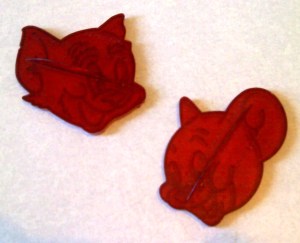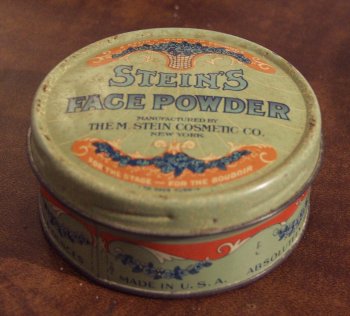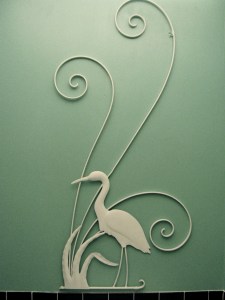
As an online seller of vintage collectibles, I hit a lot of garage and yard sales. And when I say a lot, I mean A LOT. They are really the main way I find inventory, and over time I’ve developed a great system to maximize my results, and to minimize my time and effort. I thought a post about it might be helpful to those collectors out there who avoid garage sales thinking they are too much work for too little pay off, and for those who do go to yard sales, but don’t feel they get enough bang for their buck.
Before we start I will say this – heading out into the world hoping to find very specific items can often lead to disappointment. If you don’t enjoy “the hunt”, if you would rather have your one needed item than the experience of looking for it, I suggest that you look for it online. Someone else has already done the “real world” legwork for you, and the time spent finding your item will most likely be greatly reduced!
Ok, let’s get started…
Have a Plan
Sales here are mostly on Fridays and Saturdays, so I start looking for ads on Thursday evening. I have three trusty sources – Craig’s List, the main daily newspaper, and the weekly community newspaper, which are available online. I have a Word doc for Friday and one for Saturday, and I copy and paste any ads that look interesting into them, according to the day the sale starts.
**Tip** – Double check dates and times – some people advertise a week or two in advance, and there is nothing worse than showing up at a sale that isn’t happening until the following weekend!
Once you have your list ready, hit Mapquest. Figure out directions to each sale you want to go to, and start organizing them by area. Once you have all of their locations down, figure out the best route – where to start and where to end with as little driving as possible.
You have to pay attention to start times, end times, and how promising the sale looks, and you may have to revise your Mapquest directions a bit depending on which direction you will be going from sale to sale. This can take some time, so I try to get my route done the night before, rather than working on it at 7am over my first cup of coffee!
**Tip** – The general rule is: get there early for the most selection, get there late for the best bargains.
This may seem like a lot of work, but it really does help to narrow down where you want to go, and it saves wasted time on sale days when the only thing you need to be worrying about is shopping! (It saves gas and miles on your car, too – never a bad thing!)

What To Look For In A Garage Sale Ad
To backtrack just a little, there are certain things I look for in sale ads that deem them worthy of a visit. The words Antiques, Collectibles, Estate Sale, Tag Sale, Church Sale, Downsizing, and Moving Sale are all good ones to look for. Community Sale is another – lots of sales in a small area maximizes your driving, though a lot of sales are going to be “duds” full of baby stuff.
Which brings me to the words that turn me off of a sale – maternity, baby, children’s, and lists of new retail type items. Occasionally a vintage gem will be hidden among the Little Tykes toys and Gibson china – and when it is, you can often get it for a steal – but usually you can pretty much guarantee that they won’t have anything us vintage geeks are looking for.
I have also learned that some neighborhoods are more likely to turn up treasures than others – older neighborhoods are better than newer subdivisions, and low to mid income neighborhoods have better prices than high income neighborhoods. I have a few favorite areas that I tend to go to most often, only venturing into other areas when lured by an ad that says something like “Estate Sale – 50 years worth of collecting priced to sell!”
Of course I quite often detour off my route when I see banners for a sale on the side of the road – because you just never know! 😉
Supplies
A typical morning of shopping for me starts between 8 and 9 and ends between 1 and 2. That’s quite a few hours to be on the road, so there are certain things I try to remember to take with me when I leave the house:
– Purse & Cell Phone – I’ve forgotten both before, and it’s no fun.
– Shopping Route – Turning around to go back and get your route off the printer is no fun either.
– Box with Handles & Newspaper for Packing – Especially handy for large sales where you are buying a lot of stuff – some sellers are good about having boxes, bags and newspapers, others aren’t.
– Cash – The bane of my existence is the ATM giving me only $20s – a lot of sellers don’t have change for large bills. I tend to stop for breakfast to break a $20, then try to break the others at large sales where they seem to have enough cash to make change.
– Sunglasses, hat, sunscreen, tennis shoes, appropriate for the weather clothing – Shopping at noon on a Saturday in August can be brutal, so plan accordingly!
– Snacks & Drinks – I’m usually lazy about this one and get them on the road, but really it is cheaper/healthier to bring your own!

Haggling
Honestly I don’t really like haggling, but it is a necessary evil. I don’t usually haggle on items under $2.00, but if it is over that I will ask for a better price. I usually throw out a number and see what they say – this may not always be the best course of action, but it is what I am most comfortable with.
The other option is to ask, “Is this your best price?” or something along those lines. This opens the conversation, giving the seller a chance to name a price, and then you can negotiate from there.
If items aren’t priced, always ask for a number from the seller first. Your idea of the item’s worth and the seller’s idea could be miles apart, and the last thing you want to do is pay 10 times more than what you would have paid if you would have let the seller name their price!
Another strategy is to make a pile – gather all the stuff you want to purchase and ask for a price. If they start adding up full prices from each item, ask if you could get a little break for “buying so much”.
Some people are more than happy to haggle, others act offended, and others give you a polite “Sorry, that’s the best I can do”. It’s up to you to decide from there if you want to pay full price or not.
I have noticed that sometimes people are more open to negotiating if you have been friendly with them beforehand – a Hello and Good Morning, a bit of chit chat about the weather or the item – people warm up to you and are more receptive. Just walking up without a word, grabbing a few things and throwing out a price isn’t as effective – people still have their guard up.
Buying Tips
– Check condition – If you are in a hurry it is easy to miss little flaws!
– Dig in boxes – It’s nice when a sale is neatly laid out, but if it is all unsorted boxes just dive right in there – more times than not it will be worth it!
– Buy collections/sets – It isn’t too often that you will find a ready made collection for sale that you can buy all at once, if it is something you want, take advantage of the opportunity! You can also sometimes get a better price by making an offer on an entire lot.
– If you are looking for something specific and don’t see it, ask the seller if they have anything they haven’t brought out yet. Often sellers add new items throughout the sale, and you could miss getting what you want by not asking.

I hope this post has inspired you to give the yard sale circuit a try – it really is a fun way to spend a Saturday morning, and if you put a little effort into it you will more than likely walk away with a score you will be talking about for months to come!





















































































